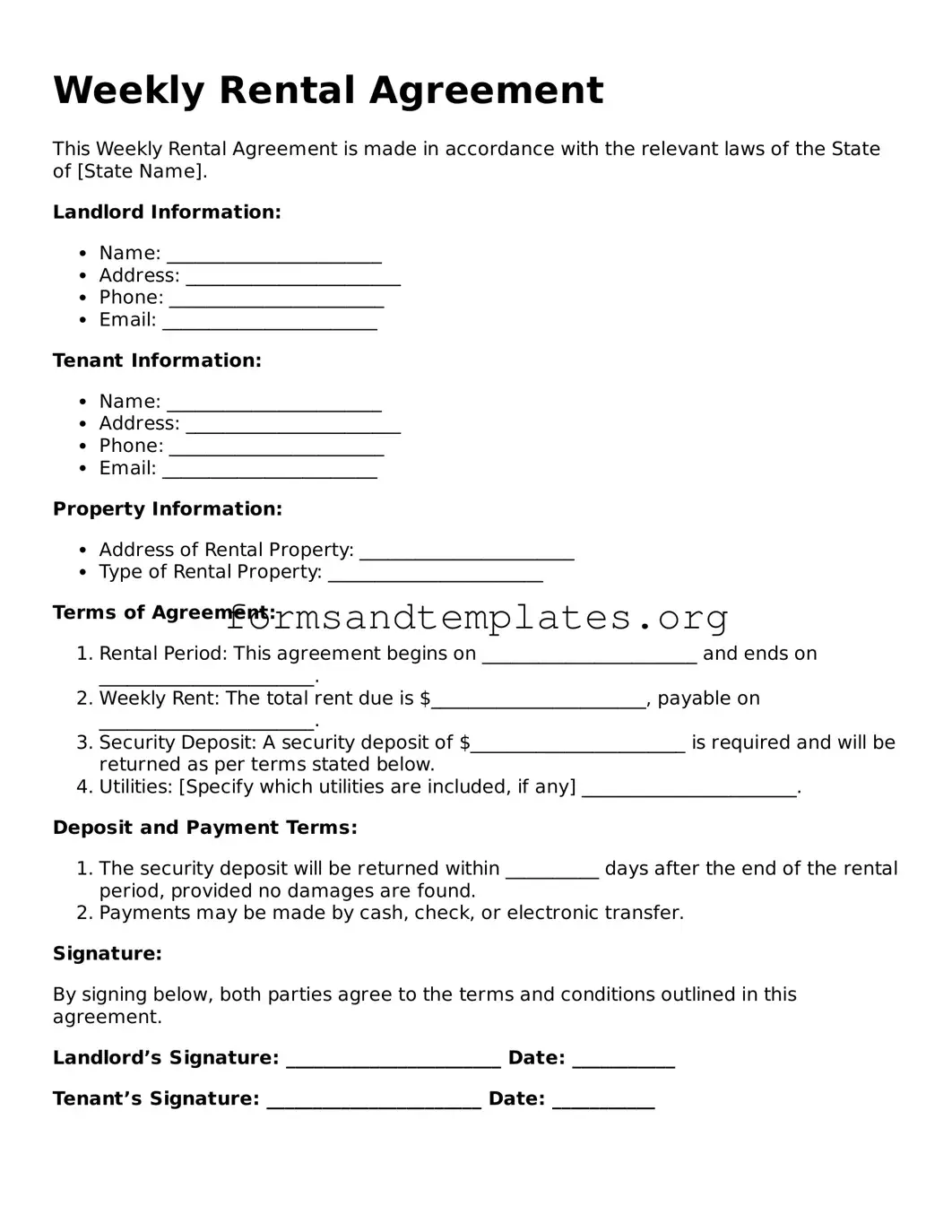Attorney-Verified Weekly Rental Agreement Template
The Weekly Rental Agreement form is a document that outlines the terms and conditions between a landlord and a tenant for renting a property on a weekly basis. This agreement provides clarity on rental payments, responsibilities, and other essential details, ensuring both parties understand their obligations. To get started, fill out the form by clicking the button below.
Access Editor Here
